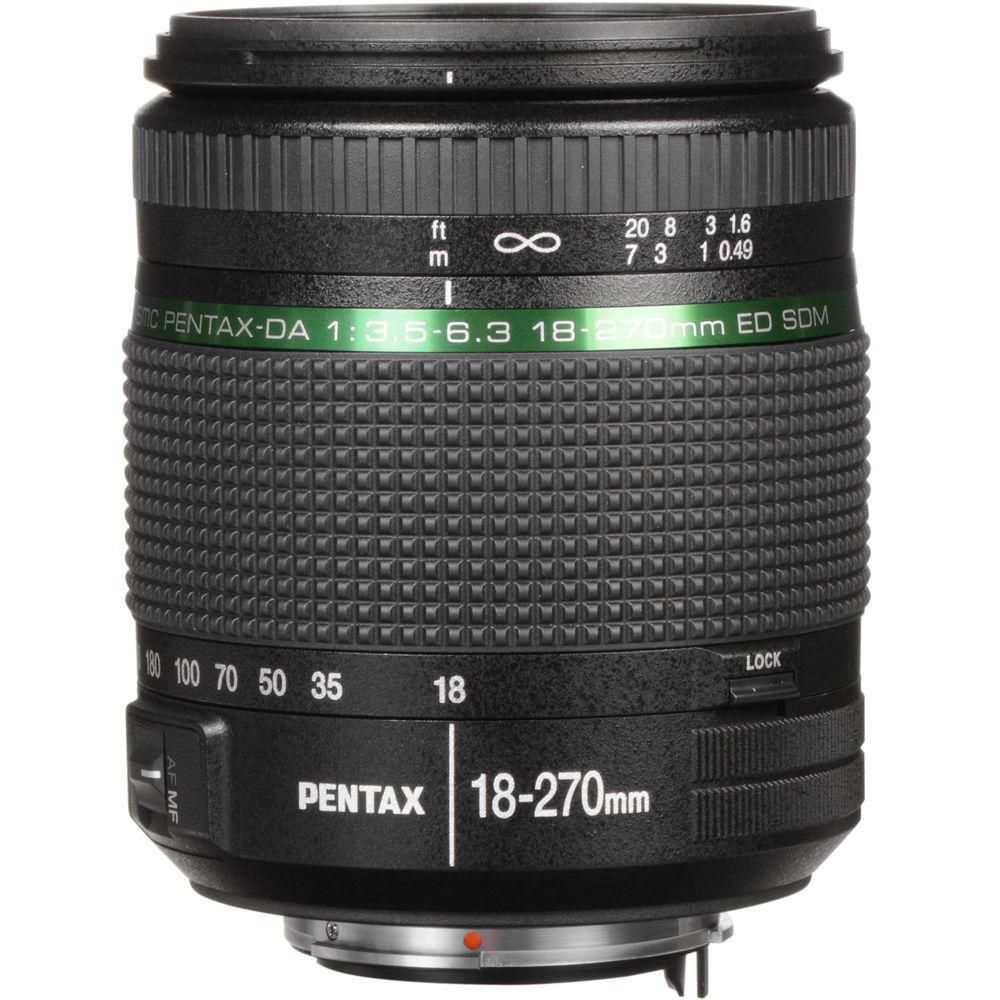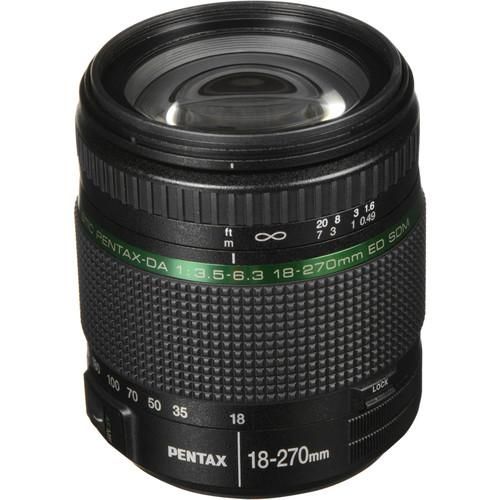Product Description
Pentax 18-270mm f3.5-6.3 SMC DA SDM Lens
- High ratio zoom lens for flexibility of operation
- Super multi-coated elements increase transmittance
- Supersonic Direct-drive Motor
- Extra-low dispersion elements increase colour rendition
- Rounded diaphragm for beautiful bokeh
This high-magnification zoom lens offers a 15-times zoom ratio to cover focal lengths from wide-angle to super-telephoto, while its built-in supersonic AF driving mechanism achieves both smooth, quiet AF operation and a compact, lightweight body. Its extraordinary wide angle-to-long-telephoto zoom coverage makes this zoom lens extremely versatile and handy, as it allows the user to effortlessly capture a wide variety of subjects, ranging from landscapes and snapshots to sports events, without the need to change the lens.

15-times zoom covering the extra-wide range.
When mounted on a PENTAX K-mount lens-interchangeable digital camera body, this zoom lens offers a 15-times zoom ratio covering focal lengths from 27.5mm wide-angle to 414mm super-telephoto in the 35mm format. This allows the photographer to capture a wide range of scenes and subjects without changing lenses — ranging from such casual applications as scenery, snapshots and portraiture to long-range sports photography. Its newly designed optics are the key to achieving such wide zoom coverage in a compact, lightweight body, for optimal versatility and manoeuvrability.
Supersonic AF motor (SDM)
Thanks to the incorporation of the PENTAX-original SDM autofocus system driven by a built-in supersonic motor, this zoom lens offers exceptionally smooth and quiet autofocus operation. When mounted on an SDM-compatible PENTAX K-mount lens-interchangeable digital camera body, the focus mode is automatically switched to SDM-assisted autofocusing to ensure dependable, flawless AF operation.

Exceptional image detail
Incorporating two extra-low dispersion (ED) elements in its optics, this zoom lens delivers bright, high-resolution images even at the edges, while effectively minimising chromatic aberration.
Other features
Minimum focusing distance of 0.49m over the entire zoom range
Rounded diaphragm to produce a smooth, beautiful bokeh (out-of-focus rendition), while minimising the streaking effect of point light sources.


























